Tony Hawk’s Pro Skater HD, xbla (Guest Reviewer)
Kiwi ex-pat Chris Leggett takes time away from the coffee grinds of Seattle to relive happy memories of grinding rails with skateboarding legend Tony Hawks.
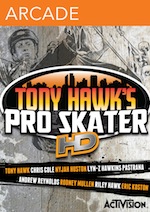 Sometimes, gaming remakes can serve as jarring reminders of why some fond memories are perhaps best left as such. But when successful, they can potentially cement the achievement of the original game as a timeless experience.
Sometimes, gaming remakes can serve as jarring reminders of why some fond memories are perhaps best left as such. But when successful, they can potentially cement the achievement of the original game as a timeless experience.
Thankfully, the core gameplay of Tony Hawk’s Pro Skater HD (THPSHD) reveals itself to be just as engrossing and addictive in 2012 as it first did back in 1998. Not even its sequels, with their incremental refinements, have reduced this classic to anything less than bottled lightning. Barely tiring from repeated sessions, this is arcade gameplay exemplified, and it’s great to see it holding up so well in this day and age.This release is essentially a mish-mash of levels from the first two games in the series, and an admirable effort has been made to bring these games into the HD era. All of the assets have been recreated and retooled in Unreal Engine 3, and yet it’s incredible how familiar everything feels when the game is in motion. But a side-by-side comparison of screenshots from the original and the remake serves to demonstrate just how different they really are. The trademark PlayStation blockiness is truly banished to the past, with character and environmental models alike tweaked with the level of realism that this generation demands.
At its most basic level, THPSHD can be enjoyed in a non-competitive, free-skating sense. There’s something relaxing, almost therapeutic, about aimlessly chaining far-fetched skateboarding maneuvers around its varied environments. But when you factor in the objectives for each level – ranging from exceeding certain trick-point scores to reaching objects in hard-to-reach areas – Tony Hawk’s Pro Skater demonstrates its versatility. Gamers of almost any inclination can find something to enjoy here.
But while THPSHD offers near-unbridled escapism, it also knows when to rein things back. Its two-minute sessions present the perfect, bite-sized gameplay portions, refocusing the player before fatigue sets in.
In terms of mechanics, THPSHD truly captures that gameplay holy grail: easy to pick up, difficult to master. Where flip maneuvers, grabs, manuals, grinds and more are easily executed individually, true mastery of THPS (not to mention, a higher score) comes in successfully chaining combinations of them all. There’s a certain skill in maintaining balance while doing so that’s tempered by a risk-reward mechanic: the longer your combo runs, the higher your potential score, but also higher is the likelihood that you’ll bungle the entire thing and those accumulated points will go begging. But by purchasing new tricks with cash earned from completing objectives, you’ll widen your available repertoire and increase your chances of success.
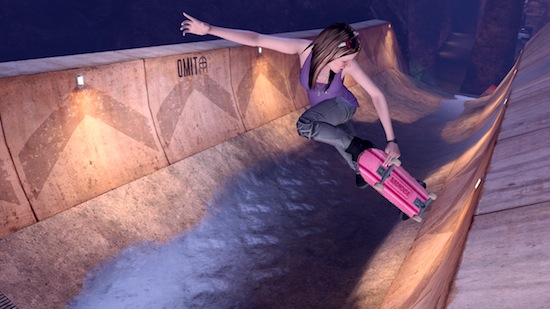
The addition of online leaderboards now provides further incentive for full-blown mastery, allowing players to easily compare high scores in each level for the first time. Now players will likely continue to revisit levels once they’ve achieved all of the individual objectives in a bid to better their friends’ best scores.
A couple of great multiplayer modes also return, with the added bonus that they can now be played online by up to four players. Unfortunately, it’s at the expense of the traditional, local splitscreen multiplayer that no doubt propelled the franchise into the ranks of notoriety.
In any case, there’s Trick Attack, where competing players simply aim for the highest score possible by the end of the two-minute run. There’s Graffiti, in which players ‘tag’ or claim objects by performing tricks on/off of them. One player can steal another player’s object (which changes colour depending on who claimed it) by performing a higher-scored trick on/off of it, and the player with the most tags at the end of the two-minute run wins.
A new multiplayer mode called Big Head has been introduced. Players’ heads will swell as a match progresses, and the only way to prevent them from exploding is to perform and land tricks. The last remaining player with their head intact wins the game. It’s an interesting mode that gets trickier as it progresses, as the rate at which players’ heads inflate increases along with it. One missed trick can put a player at a major, high-pressure disadvantage. It’s nice that Robomodo wasn’t content with simply repackaging old content alone, but this is arguably the weakest multiplayer mode on offer.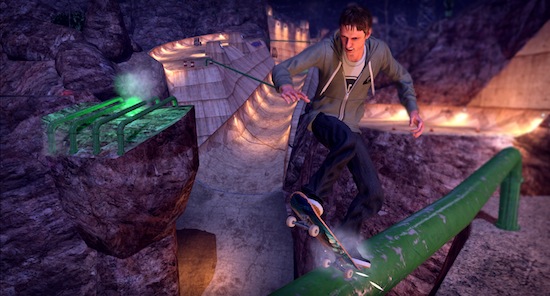
Of course, the franchise became almost as famous for its soundtracks, which did much to kick-start the careers of many fledgling artists while also securing some respected alternative mainstays. I imagine licensing red tape prevented Activision from releasing the exact same track list as the original two games, with only one returning track from THPS present and accounted for. The remainder of the pop-punk/rap/hard-rock-heavy track list is either from THPS2 or consists of songs that are completely new to the series but fits in with its overarching vibe. It does much to fuel the nostalgia for the series, but part of me wants to deduct points purely for reminding the world that Powerman 5000 ever existed. But it’s incredible how much the one-two punch of that familiar gameplay backed with something like Lagwagon’s ‘May 16’ resurrects some fond memories.

It may lack the additional features of later releases from the Tony Hawk franchise, but this trip back to where the skateboard-game revolution all began makes a lot of sense. It passes the rose-tinted-glasses test with flying colours and remains a fun and accessible arcade experience to its very core. As someone who spent far too much time grinding around them in the past, it’s great to have the keys to these classic skate parks once again.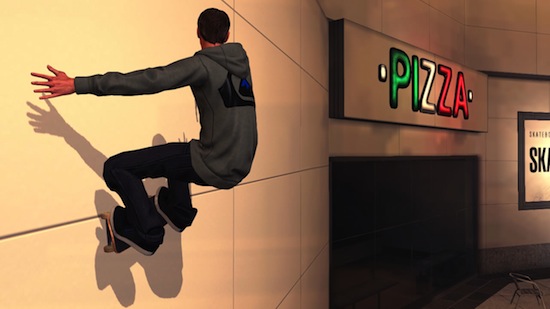


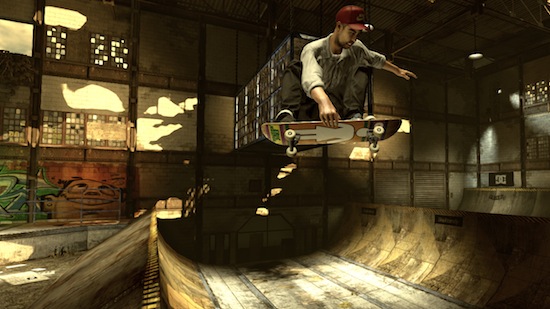

Pingback: Six months | Leggetron.com